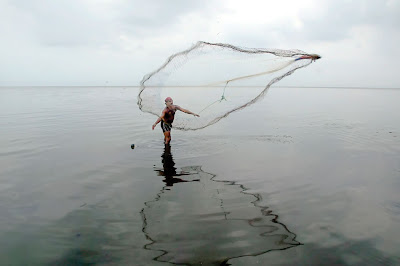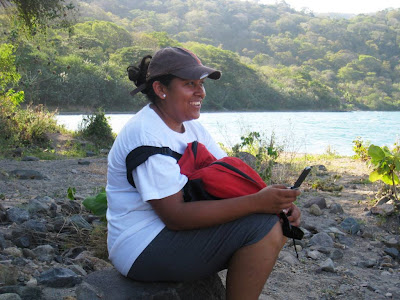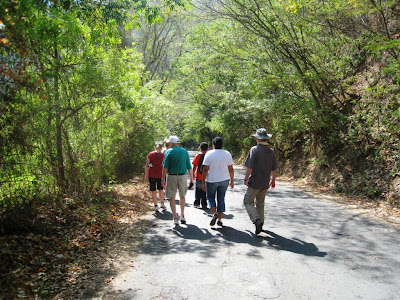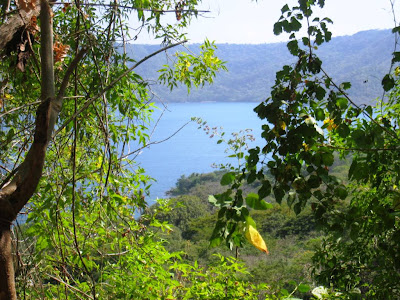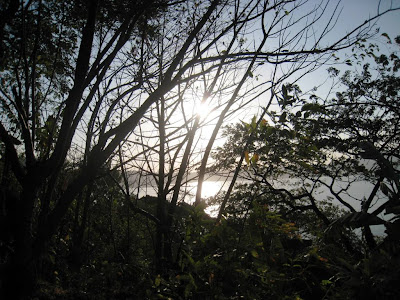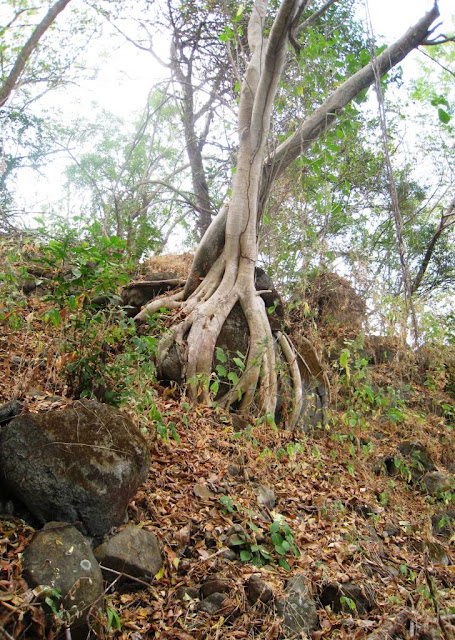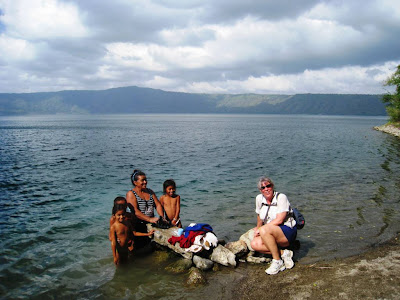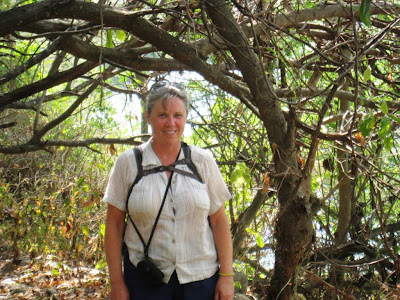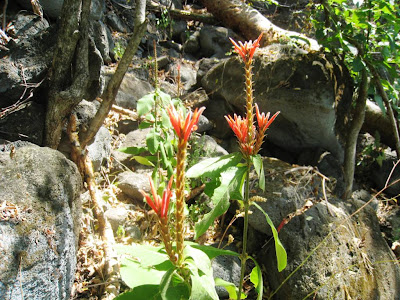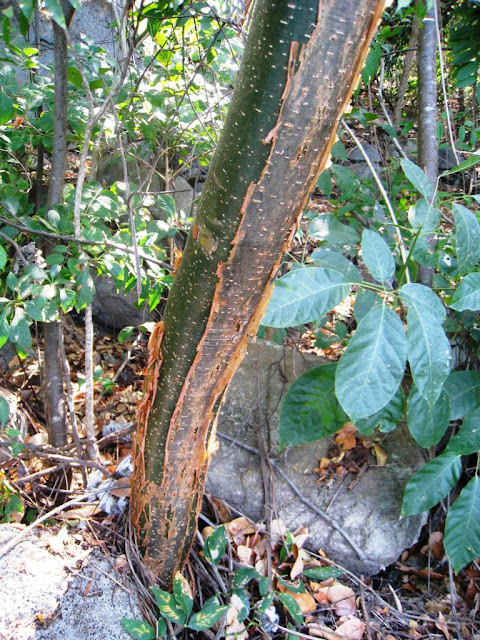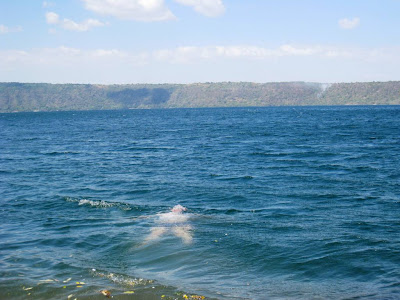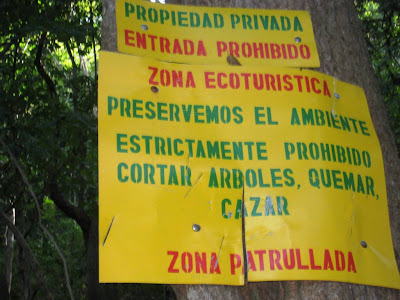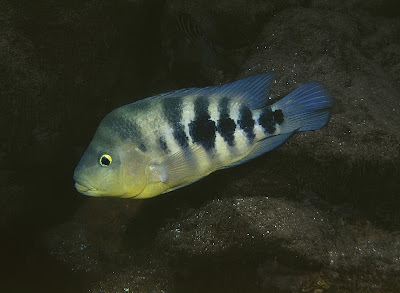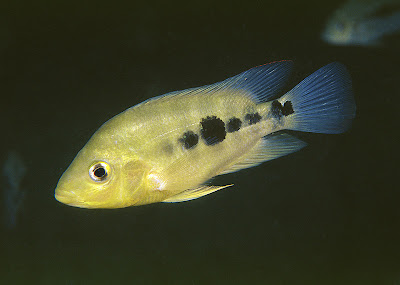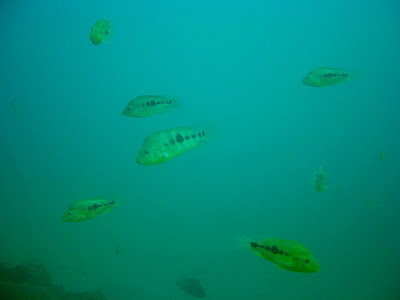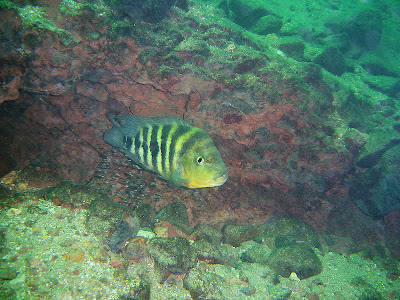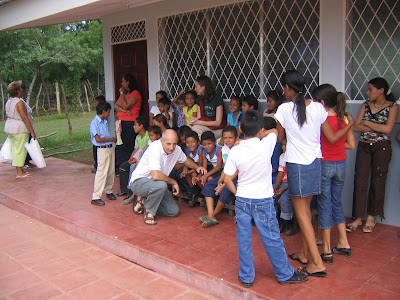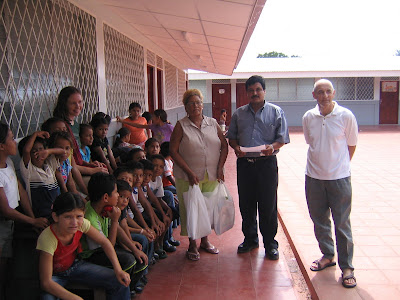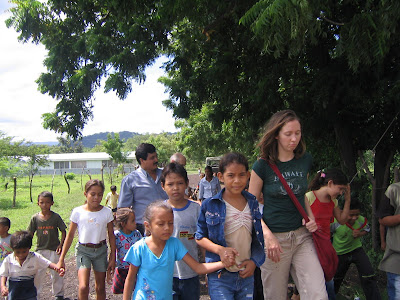Lake Apoyo, Nicaragua, is home to several endemic fish species of the genus Amphilophus, members of the so-called Midas cichlid species complex, as is Lake Xiloa. Evolution may have affected the fish in these two lakes differently, however, particularly because those from Lake Xiloa evolved in the presence of an important predator of cichlid fry, the bigmouth sleeper (Gobiomorus dormitor), whereas this predator was not present in Lake Apoyo during the two hundred or so centuries during which the several species of Lake Apoyo took form. The bigmouth sleeper was introduced into Lake Apoyo in 1991, by an individual with great plans for fishing and a bucket full of the sleepers just caught in a nearby lake.
In a collaboration between the University of Turku, Finland, the University of Konstanz, Germany, and FUNDECI/GAIA, we compared the responses of two ecologically similar Amphilophus cichlids in the two lakes. The defensive responses to predators of arrow cichlid, Amphilophus zaliosus, in Lake Apoyo were compared to that of Amphilophus sagittae in Lake Xiloa. The arrow cichlid demonstrated evolutionary naivete, allowing this dangerous predator of fry to reach closer to its nest than its counterpart in Lake Xiloa. The results were just published by Topi Lehtonen, Jeffrey McCrary, and Axel Meyer, in January 2012 in PLoS One, a journal of cutting-edge biological science research.
These results are of vast importance, because the arrow cichlid is now officially an endangered species. It is listed by the IUCN as Critically Endangered. Its population is extraordinarily small, its habitat limited to Lake Apoyo, and its threats now include an exotic predator. Our monitoring of this fish, and its fellow Midas cichlid species, is more important than ever. In the context of Lake Apoyo, the bigmouth sleeper is an invasive species with dangerous qualities.
Taken from the Abstract:
" Introduced species represent one of the most serious global threats to biodiversity. In this field-based study, we assessed behavioural responses of brood tending cichlid fish to an invasive predator of their offspring. This was achieved by comparing parental defence responses of the endangered arrow cichlid (Amphilophus zaliosus), a fish species endemic to the crater lake Apoyo in Nicaragua, towards the bigmouth sleeper (Gobiomorus dormitor), a formidable predator of cichlid fry, and all other potential fish predators of offspring. The bigmouth sleeper was recently introduced into Apoyo but naturally co-exists with cichlids in a few other Nicaraguan lakes. Arrow cichlid parents allowed bigmouth sleepers to advance much closer to their fry than other predators before initiating aggressive brood defence behaviours. Interestingly, parents of a very closely related species, A. sagittae, which has coevolved with bigmouth sleepers in crater lake Xiloa´, reacted to approaching bigmouth sleepers at comparable distances as to other predators of cichlid fry. These results provide a novel demonstration of the specific mechanism (i.e. naive parental behaviour) by which invasive predators may negatively affect species that lack the adequate behavioural repertoire."
If you are interested in seeing the arrow cichlid up close and personal, go scuba diving with us. We monitor the fish populations of Laguna de Apoyo and certified open-water divers can join us in a monitoring dive.
In a collaboration between the University of Turku, Finland, the University of Konstanz, Germany, and FUNDECI/GAIA, we compared the responses of two ecologically similar Amphilophus cichlids in the two lakes. The defensive responses to predators of arrow cichlid, Amphilophus zaliosus, in Lake Apoyo were compared to that of Amphilophus sagittae in Lake Xiloa. The arrow cichlid demonstrated evolutionary naivete, allowing this dangerous predator of fry to reach closer to its nest than its counterpart in Lake Xiloa. The results were just published by Topi Lehtonen, Jeffrey McCrary, and Axel Meyer, in January 2012 in PLoS One, a journal of cutting-edge biological science research.
These results are of vast importance, because the arrow cichlid is now officially an endangered species. It is listed by the IUCN as Critically Endangered. Its population is extraordinarily small, its habitat limited to Lake Apoyo, and its threats now include an exotic predator. Our monitoring of this fish, and its fellow Midas cichlid species, is more important than ever. In the context of Lake Apoyo, the bigmouth sleeper is an invasive species with dangerous qualities.
Taken from the Abstract:
" Introduced species represent one of the most serious global threats to biodiversity. In this field-based study, we assessed behavioural responses of brood tending cichlid fish to an invasive predator of their offspring. This was achieved by comparing parental defence responses of the endangered arrow cichlid (Amphilophus zaliosus), a fish species endemic to the crater lake Apoyo in Nicaragua, towards the bigmouth sleeper (Gobiomorus dormitor), a formidable predator of cichlid fry, and all other potential fish predators of offspring. The bigmouth sleeper was recently introduced into Apoyo but naturally co-exists with cichlids in a few other Nicaraguan lakes. Arrow cichlid parents allowed bigmouth sleepers to advance much closer to their fry than other predators before initiating aggressive brood defence behaviours. Interestingly, parents of a very closely related species, A. sagittae, which has coevolved with bigmouth sleepers in crater lake Xiloa´, reacted to approaching bigmouth sleepers at comparable distances as to other predators of cichlid fry. These results provide a novel demonstration of the specific mechanism (i.e. naive parental behaviour) by which invasive predators may negatively affect species that lack the adequate behavioural repertoire."
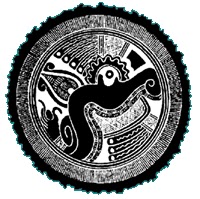 |
| Click on the "escudo" to contact us. |

